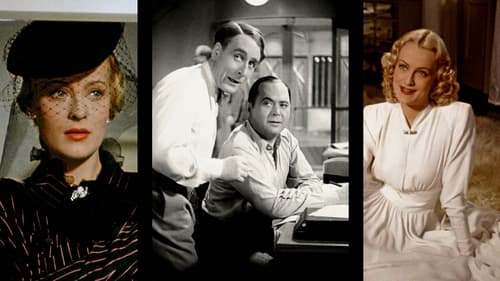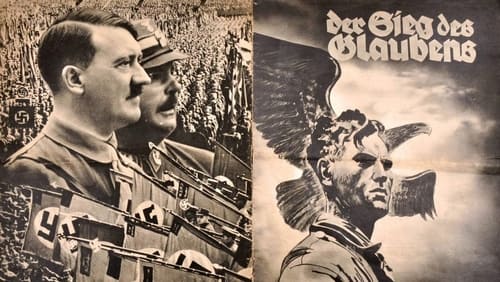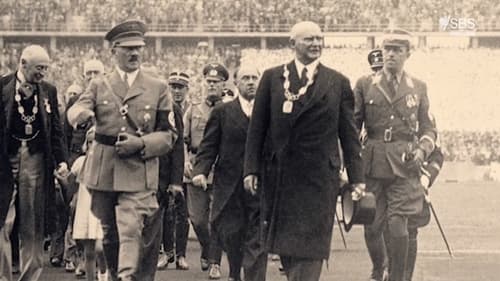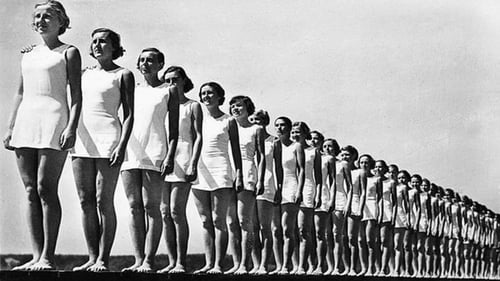Chlapci v modrém (1943)
Genre :
Runtime : 0M
Director : Waldemar Sent
Writer : Waldemar Sent, Vladimír Linhart
Synopsis

A keen chronicle of the unlikely rise to power of Adolf Hitler (1889-1945) and a dissection of the Third Reich (1933-1945), but also an analysis of mass psychology and how the desperate crowd can be deceived and shepherded to the slaughterhouse.

Stage mime Antoine Moreau is compelled by the Gestapo to put on a performance for the children of Terezin, a "model" concentration camp, to convince the Red Cross observers that the camp is truly what it seems. Reluctant at first, Moreau slowly learns the true nature of the camp, including the meaning of the "transports" on which people leave. With a world-class orchestra (made up of people interned in the camp) and a cast of children, Moreau stages a show to end all shows.

Film journalist and critic Rüdiger Suchsland examines German cinema from 1933, when the Nazis came into power, until 1945, when the Third Reich collapsed. (A sequel to From Caligari to Hitler, 2015.)

Nazi propaganda film based on the life and death of Hitler Youth Herbert "Quex" Norkus – in the film, renamed Heini Völker – who was killed while distributing flyers in a Communist neighborhood.

The earliest Nazi propaganda film by Leni Riefenstahl, best known for her follow-up Triumph of the Will. Victory follows the Fifth Nazi Party Rally (Nuremberg, 30 August–3 September 1933) and shows the then close relationship between Adolf Hitler and Ernest Rõhm. Ten months later, on 1 July 1934, during the Night of the Long Knives, Hitler had Rõhm shot, which not only had the Sturmabteilung threat eliminated but also concreted Hitler's supremacy. Because Hitler sought to erase Rõhm from German history, he ordered all known copies of the film destroyed but one resurfaced in 1980s East Germany.

In front of television crews and thousands of spectators, Spaceship-1—commanded by Commodore Hardt, inventor of the powerful rocket fuel "Neotan-X"—blasts off on the first flight to the Moon.

In this film, the wife of a renowned doctor becomes ill with multiple sclerosis. Trying to spare her beloved husband the ordeal, the woman turns to a family friend, Dr. Lang, to help end her life. When this doctor declines to help with the assisted suicide, however, she is forced to turn to her husband. After much soul-searching, Dr. Heyt, her husband, assists in her suicide. The act, however, is witnessed by a chambermaid, who reports him to the police. Dr. Heyt is put on trial for murder and, at first, Dr. Lang testifies against him in court. Soon, however, Dr. Lang is faced with a similar case in his professional practice and this, along with Dr. Heyt’s impassioned performance in court, convinces Dr. Lang that, in some instances, mercy killing may be the right thing to do. A very rare film, which, no matter on which side of the debate you stand, has relevance to this very day.


Nazi propaganda film about the embryo of metal falling from the sky, extracted by the German industry for various purposes.

In 1938 Nazi leader Heinrich Himmler sponsored an expedition to Tibet lead by several Nazi SS scientists to study the regions flora and fauna, and to take scientific measurements of the Earths magnetic fields. The expedition was also sent to find traces of the orgins of the "Aryan" race in Tibet which was where Himmler thought evidence of could be found. This film is a Nazi era documentary of that expedition.

Hitler, Nazi propaganda and 1936 Berlin Olympics are put under the microscope to uncover hidden truths and the historical legacy of those games.

This Nazi propaganda film tells the story of a young truck driver who is having trouble making ends meet until he is exposed to the teachings of Adolf Hitler, and he joins the S.A., aka Storm Troopers, and manages to convert his father--a former soldier with Marxist leanings--and his girlfriend of the rightness of the Nazi cause.

This film claims that the Germanic tribes predated the knowledge of the ancient Egyptian pharaohs, then compares these findings with the contemporary German regime of Adolf Hitler.

"Götterdämmerung 1945: The last 10 weeks of the Third Reich" - from the battle of the Ardennes till the end. Die Deutsche Wochenschau (The German Weekly Review) was the title of the unified newsreel series released in the cinemas of Nazi Germany from 1940 until the end of World War II.

"Faith and Beauty" - The BDM-Werk Glaube und Schönheit (German for BDM Faith and Beauty Society) was founded in 1938 to serve as a tie-in between the work of the League of German Girls (BDM) and that of the National Socialist Women's League. Membership was voluntary and open to girls aged 17 to 21. A Nazi propaganda film.













